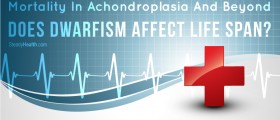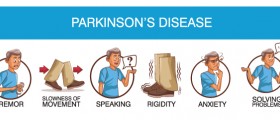
Dwarfism is a medical condition caused by chromosomal abnormalities. People affected by dwarfism remain in a short stature for lifetime, thus they are commonly called little people. Apart from short stature, dwarfism is featured by bone deformity.
Types of DwarfismThere are around 200 types of dwarfism that are classified based upon the underlying cause. But, dwarfism can be divided into two main categories: disproportionate dwarfism and proportionate dwarfism.
Disproportionate Dwarfism
Disproportionate dwarfism encompasses types of the condition characterized by disproportionate body size. In disproportionate dwarfs, some parts of the body are of average or larger size comparing to other body parts. Medical conditions that cause disproportionate dwarfism impair development of bones. Most common cause for abnormal development of body parts is a condition called achondroplasia. In fact, achondroplasia is the cause for about 70% of all dwarfism cases. This type of disproportionately short stature is featured by average size trunk and disproportionately short limbs. People affected by achondroplasia also have unusually large heads with prominent forehead. In some people, trunk can be abnormally short and limbs disproportionately large. Genetic mutations are most common cause of disproportionate dwarfism. Achondroplasia is inherited condition that occurs due to mutation in the fibroblast growth factor gene in DNA. People with disproportionately short stature generally have normal intelligence. However, sometimes presence of excess fluid around the brain, or hydrocephalus, can affect intellectual capacity of the affected person. Achondroplasia is associated with symptoms such as: enlarged head, prominent forehead, flattened bridge of the nose, an average size trunk and short arms and legs. People suffering from this type of dwarfism have short fingers while middle and ring fingers are widely separated. Other symptoms of achondroplasia are limited mobility of elbows, poor muscle tone, deformity of the spine and bowed legs. A lifespan of people with achondroplasia isn't significantly affected but is slightly below average (about 10 years) compared to people who aren't affected.
Proportionate Dwarfism
In proportionate dwarfism a body is proportionally small because all parts are small to the same extent. Proportionately small stature is generally caused by growth hormone deficiency. The cause of this deficiency is in insufficient production of the hormone by the pituitary gland. This type of dwarfism can be either present at birth or develop during first years of life. Growth hormone deficiency can lead to delay in mental development and intellectual disability. Most common type of proportionate dwarfism is Turner syndrome which affects only females. Symptoms of Turner syndrome may not be visible at birth but become apparent in adolescence. This condition is featured by short stature and loss of ovarian function. Wide neck, small lower jaw and narrow palate are common signs of the syndrome. Hands and arms are usually turned outward at elbows.

















Your thoughts on this
Loading...